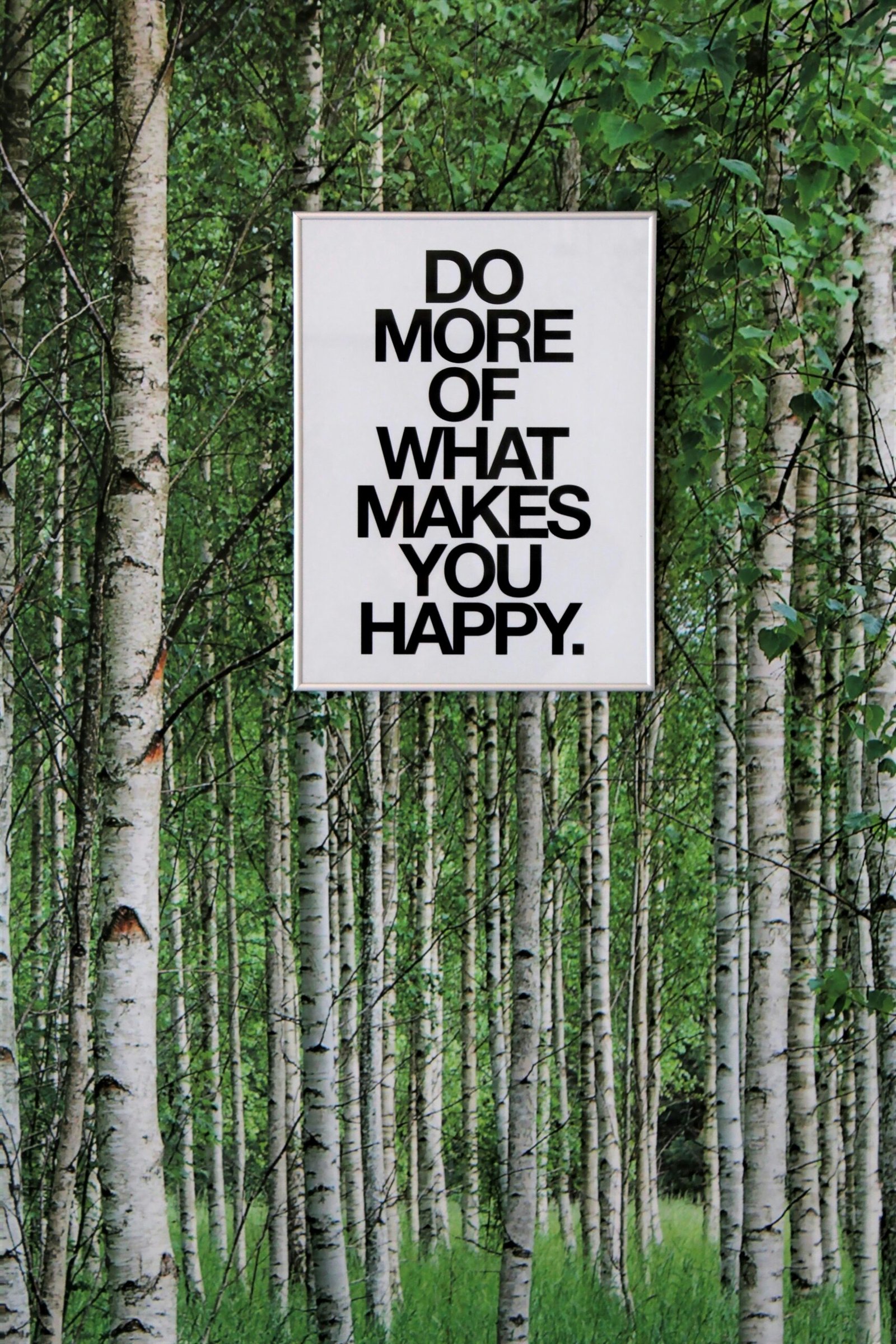Understanding Distractions in the Workplace
Distractions in the workplace are a ubiquitous challenge that can severely hamper productivity and mental well-being. Understanding the various types of distractions and their impacts is crucial for devising effective strategies to mitigate them. Workplace distractions can be broadly categorized into internal and external sources.
Internal distractions often stem from personal issues or cognitive functions. Common examples include daydreaming, stress, anxiety, and even physical discomfort. These internal factors can divert attention away from work tasks, making it difficult to maintain focus. Stress and anxiety, in particular, can lead to a vicious cycle where the inability to concentrate exacerbates the source of stress, further diminishing productivity.
External distractions are equally disruptive and include factors such as noise, interruptions by colleagues, and digital notifications. An open office layout, while fostering collaboration, often subjects employees to a barrage of auditory distractions. Similarly, unplanned interruptions by colleagues for impromptu discussions or queries can break the flow of concentrated work. Digital notifications from emails, instant messages, and social media are another significant source of external distraction.
The impact of these distractions on productivity is substantial. According to a study by the University of California, Irvine, it takes an average of 23 minutes and 15 seconds to get back to the task after a distraction. This loss of focus can accumulate, leading to a considerable drop in work efficiency. Furthermore, chronic distraction can contribute to mental fatigue, increased stress levels, and deteriorating job satisfaction, ultimately impacting overall well-being.
Statistics further underscore the pervasiveness of workplace distractions. A survey by Udemy found that 70% of employees feel distracted at work, with 16% asserting that they are almost always distracted. Such high prevalence highlights the need for organizations to understand and address the root causes of distractions to foster a focused and productive work environment.
Identifying Your Personal Distraction Triggers
Remaining focused at work can often feel like a formidable challenge, particularly when personal distraction triggers are omnipresent. Understanding these triggers on a personal level can significantly enhance one’s ability to beat distractions and maintain concentration. A pivotal step in this process involves self-assessment techniques that aid in identifying the very sources of distraction.
Many common scenarios can potentially derail one’s focus. For instance, the habit of constantly checking smartphones for notifications, social media updates, or messages can be a major distraction. Multitasking, although perceived as a productivity booster, often fragments attention and contributes to inefficiency. Additionally, personal issues such as family concerns, emotional stress, or health problems can seep into the work environment, diverting one’s concentration.
One practical exercise to unearth these distraction triggers is maintaining a distraction diary. Keeping this diary for a week entails noting each instance of distraction, along with the time of occurrence, the task being interrupted, and the nature of the distraction. Over time, patterns will emerge, highlighting prevalent distraction triggers. This method not only helps in recognizing the distractions but also in formulating strategies to mitigate them.
The distraction diary can reveal various personal triggers, such as the lure of digital devices, frequent interruptions from colleagues, or even specific times of the day when focus seems especially elusive. Analyzing these entries at the week’s end provides valuable insights into one’s behavior and the external factors at play.
In conclusion, by identifying personal distraction triggers through self-assessment and practical exercises like distraction diaries, individuals can cultivate a more focused and efficient work environment. The key lies in recognizing and addressing these distractions proactively, thereby paving the way for improved concentration and productivity.
To maintain concentration and improve productivity at work, creating a distraction-free workspace is paramount. The physical environment of your workplace directly influences your ability to stay focused. One of the most effective ways to minimize distractions is to invest in ergonomic furniture. Ergonomic chairs and desks are designed to support your body and reduce strain, allowing you to work comfortably for extended periods. Ensuring that your workstation is adjusted to your body can prevent physical discomfort and keep attention on tasks at hand.
Additionally, adopting a clean desk policy can significantly reduce visual clutter and subsequently limit distractions. Keeping only essential items within your immediate reach can help maintain focus on your current projects. Regularly decluttering your desk prevents the accumulation of unnecessary items that can divert attention. Simple storage solutions like drawers, filing cabinets, and organizers can efficiently manage documentation and supplies.
Noise is a common distraction in both home and traditional office settings. Utilizing noise-canceling headphones can create a quiet personal bubble, blocking out ambient sounds and allowing you to concentrate on your work. For those who find complete silence unnerving, listening to soft instrumental music or white noise can be an effective alternative. This can help mask background noises that could potentially disrupt your workflow.
Another critical factor in creating a distraction-free workspace is the strategic placement of desks. Positioning desks away from high-traffic areas can minimize interruptions from colleagues or family members. In open office layouts, placing desks in quiet corners or using screens and partitions can help to carve out a focused working environment.
For those working from home, it is essential to establish a dedicated work area. This separation of work and living spaces can help mentally signal the transition from personal time to professional productivity. Moreover, ensuring that this space is well-lit, comfortable, and equipped with necessary tools can enhance your ability to remain focused on work tasks.
Implementing Time Management Techniques
Effective time management techniques are critical in minimizing distractions and enhancing focus at work. Three prominent methods – the Pomodoro Technique, time blocking, and the Eisenhower Matrix – stand out for their simplicity and effectiveness. Each offers unique benefits and challenges, allowing individuals to choose the approach that best suits their workflow.
The Pomodoro Technique is built on the principle of working in short, focused intervals typically lasting 25 minutes, followed by a 5-minute break. After four such intervals, a longer break (15-30 minutes) is taken. To implement the Pomodoro Technique, set a timer for 25 minutes and work solely on one task. Once the timer rings, take a brief break before starting the next 25-minute session. This method helps maintain high levels of concentration and can be particularly effective for those who struggle with prolonged focus. However, it may disrupt flow states in activities that require extended deep thinking.
Time blocking involves allocating specific blocks of time to different tasks or activities throughout the day. By scheduling these blocks in advance, individuals can ensure that each critical activity receives the appropriate amount of attention. To practice time blocking, begin by listing all tasks that require attention and estimate the time needed for each. Then, assign those tasks to specific time slots in your calendar. Time blocking ensures a structured day, reduces the likelihood of procrastination, and provides a visual plan of one’s day. On the flip side, it can be challenging to adapt quickly to unscheduled interruptions.
The Eisenhower Matrix, also known as the Urgent-Important Matrix, is a decision-making tool that helps prioritize tasks based on their urgency and importance. The matrix divides tasks into four quadrants: urgent and important, important but not urgent, urgent but not important, and neither urgent nor important. To utilize this method, first, categorize all tasks into these quadrants. Then, focus on completing tasks in the “urgent and important” category, plan tasks that are “important but not urgent,” delegate those that are “urgent but not important,” and consider eliminating tasks that fall into the “neither urgent nor important” category. This structured approach ensures that critical tasks are addressed promptly, though it may require constant evaluation and re-evaluation of task priorities.
Planners and digital tools like Todoist, Trello, and Google Calendar can significantly aid in implementing these time management techniques. These tools are designed to organize tasks, set reminders, and track progress, making it easier to adhere to chosen methods. Ultimately, integrating these techniques and tools can remarkably enhance productivity by effectively managing time and reducing distractions.
Leveraging Technology to Stay Focused
In the modern workplace, digital tools and applications have become instrumental in helping individuals maintain focus and block distractions. Productivity apps like Trello and Asana, for instance, offer structured frameworks for task management. Utilizing boards, lists, and cards, Trello enables users to visually organize tasks and projects, promoting clarity and direction. Similarly, Asana provides timelines, milestones, and workload management features that help teams stay aligned and manage their time efficiently.
Focus-specific applications such as Forest and Freedom also play a significant role in minimizing distractions. Forest uses a unique gamified approach wherein users plant virtual trees that grow as long as they refrain from using distracting apps on their devices. The tangible outcome of a flourishing forest provides a visual incentive to remain undistracted. On the other hand, Freedom allows users to block access to distracting websites and apps across all their devices for specified periods. This focused mode ensures that users can work uninterrupted during their most productive hours.
Additionally, leveraging integrated systems within smartphones and computers can further enhance concentration. Features such as ‘Do Not Disturb’ mode can silence notifications during set hours, helping to create a distraction-free environment. Scheduling such focused sessions consistently can train the brain to work more efficiently within those time blocks.
To effectively integrate these tools into daily routines, start by identifying the most distracting elements and the times when focus wanes. Use Trello or Asana to break down large projects into manageable tasks and set deadlines. Simultaneously, schedule distraction-free sessions with apps like Forest or Freedom and enforce them by using the ‘Do Not Disturb’ mode. Experiment with different combinations and settings to discover what works best for your productivity style.
By strategically leveraging these technological tools, individuals and teams can significantly enhance their focus and productivity, transforming potential distractions into opportunities for improved efficiency and success.
Building a Routine for Consistent Focus
Establishing a daily routine is pivotal in creating a sense of rhythm and predictability, both of which play crucial roles in reducing distractions. A well-structured routine can significantly enhance your ability to stay focused at work. By adhering to a consistent schedule, you can train your brain to recognize specific periods dedicated to focused work, effectively minimizing the intrusion of distractions. This practice not only boosts productivity but also fosters a more disciplined work environment.
Morning rituals set the tone for the rest of the day. Activities such as exercise, meditation, or enjoying a nutritious breakfast can prepare your mind and body for the tasks ahead. Consistent morning routines help signal to your brain that it is time to transition from a state of rest to one of productivity. This psychological preparation is essential for maintaining focus throughout the day.
Regular breaks are another critical component of a productive routine. Short, frequent breaks can rejuvenate your mind and prevent burnout. The Pomodoro Technique, for instance, involves working for 25 minutes, followed by a 5-minute break. This method can enhance concentration and ensure that you stay mentally fresh. Incorporating these breaks into your daily schedule can prevent the mind from wandering, thereby reducing the chances of distractions.
End-of-day routines are as important as morning rituals. Concluding your workday with a consistent routine allows you to transition smoothly from work mode to relaxation. Activities such as reviewing your day’s achievements, planning for the next day, or engaging in a calming activity can help you wind down. This practice not only marks a clear boundary between work and personal time but also aids in preparing your mind for the next day’s tasks.
In essence, a well-crafted routine can provide significant psychological benefits. It fosters a structured day, which is instrumental in sustaining attention and boosting overall productivity. By embedding routines into your daily schedule, you can reduce distractions and enhance your focus at work, paving the way for a more efficient and productive professional life.
Practicing Mindfulness and Stress Management
The modern workplace is fraught with distractions that can impede productivity and increase stress levels. Practicing mindfulness and effective stress management techniques can be pivotal in reducing distractions and enhancing focus. Mindfulness, the practice of being present and fully engaged in the moment, serves as a foundation for mitigating stress and curbing the influx of distractions. By adopting mindfulness exercises such as meditation, deep breathing, and mindful breaks, employees can develop a heightened sense of awareness and an improved capacity for sustained attention.
Meditation is one of the most accessible and effective mindfulness practices. Allocating just a few minutes each day for meditation can significantly enhance concentration and reduce stress. Simple meditation exercises, such as focusing on one’s breath or repeating a calming mantra, can help settle a cluttered mind. Regular practice of meditation fosters a tranquil mental state, making it easier to maintain focus during tasks.
Deep breathing exercises are another robust tool for managing stress and improving mindfulness. Techniques such as diaphragmatic breathing or the 4-7-8 method can quickly reduce anxiety and refocus the mind. By practicing these techniques when feeling overwhelmed, employees can lower their stress levels, thereby reducing the likelihood of being distracted.
Incorporating mindful breaks into the workday can also be beneficial. During these breaks, individuals might take a short walk, stretch, or practice a brief moment of mindfulness to reset their mental state. These breaks serve to refresh the mind and revitalize energy levels, making it easier to tackle subsequent tasks with renewed focus and clarity.
There is a well-documented connection between stress, distractions, and decreased productivity. High levels of stress can lead to a scattered mind, making it difficult to concentrate and complete tasks efficiently. Implementing regular mindfulness practices can significantly reduce stress, thereby decreasing the frequency of distractions and enhancing overall productivity. By committing to these practices, employees can develop resilience against workplace stressors and cultivate an environment conducive to sustained focus and performance.
Maintaining Focus in a Remote Work Environment
Working remotely presents unique challenges for maintaining focus. Unlike traditional office settings, remote work environments often blur the boundaries between professional and personal life, making it difficult to concentrate on work tasks. Setting clear boundaries is essential. Establishing a routine that signals the start and end of the workday can help create a mental separation between work and personal time. Informing family members of your working hours can also minimize interruptions.
Creating a dedicated workspace at home is another crucial step. A specific area designated for work can significantly enhance your productivity. Whether it’s an entire room or just a corner of your living space, ensure it is equipped with all necessary materials and is free from household distractions. Personalizing this space to make it comfortable and conducive to work can also improve your focus.
Maintaining communication with colleagues is vital in a remote work environment. Frequent check-ins and virtual meetings can help you stay aligned with your team and ensure everyone is on the same page. Utilizing collaborative tools and platforms can foster a sense of connectivity and teamwork, reducing feelings of isolation that can lead to distractions.
Managing remote work distractions, such as household chores or family interruptions, requires deliberate effort. Scheduling specific times for chores or non-work-related activities can prevent them from encroaching on work hours. Additionally, setting clear expectations with family members about your work commitments can help mitigate interruptions.
Ultimately, staying focused while working remotely involves a combination of boundary-setting, creating an effective workspace, maintaining communication, and managing distractions. By implementing these strategies, remote employees can create an environment that fosters concentration and productivity, thereby overcoming the inherent distractions of working from home.






